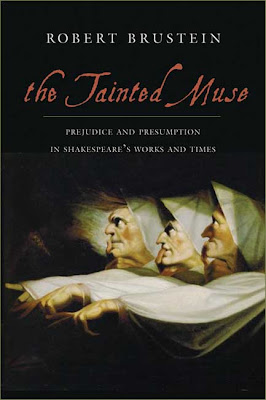
The Lincoln Center revival of August Wilson's Joe Turner's Come and Gone--besides being Barack's choice for the show to take Michelle to see--is one representative of an exceptionally strong Broadway season, especially for plays.
The New York theatre season began with a sense of catastrophe--with empty streets and empty seats, as the Wall Street financial crisis morphed into the Great Recession, and tourism threatened to dry up completely.
But it will end--officially with the Tonys--in triumph, and more high quality plays and musical revivals than in recent memory, including The Seagull, Exit the King, God of Carnage, Hair, Joe Turner’s Come and Gone, Mary Stuart, Next to Normal, The Norman Conquests, reasons to be pretty, Billy Elliot, West Side Story and Waiting for Godot.
New York Times critic Ben Brantley was effusive as well as descriptive in his summary piece. So why did it happen? Brantley offers several reasons, noting that when tourists deserted Times Square, the New York theatre audience returned, and fortunately found the quality that kept them coming. While a lot about this season has to be coincidence, the return of that audience is fascinating in itself--or rather, the existence of a new New York audience.
Years ago, I interviewed Jason Robards, Jr. about New York theatre, since he was the second of three generations of actors who were part of it. He dated the decline to the rise of suburbia, which took the traditional New York audience away. "When I was starting out just after World War II," he told me, "my father came to see me and he told me---'this is terrible! When I was an actor, there were 700 road shows out, and two hundred some-odd theatres on Broadway!'"Even when I was starting out we still had 134 theatres in New York, and many road shows and stock jobs and resident theatre jobs...Now I think theatre in New York is going to become like the opera, if it isn't already becoming that: a small, specialized thing."
But lacking that local audience base, for the past decade or so Broadway concentrated on spectacles for tourists. The Disneyfied Times Square more than symbolized that idea.
Somehow, New York City itself seems to have grown a new theatre audience, made up of residents and those who may commute but consider themselves New Yorkers. This is a trend that bears watching.
Of course, not everything about this season screams theatre Renaissance. Many if not most of those shows were revivals. Broadway and New York theatre won't return to the vibrancy of former days until new plays are the talk of the town.
The New York theatre season began with a sense of catastrophe--with empty streets and empty seats, as the Wall Street financial crisis morphed into the Great Recession, and tourism threatened to dry up completely.
But it will end--officially with the Tonys--in triumph, and more high quality plays and musical revivals than in recent memory, including The Seagull, Exit the King, God of Carnage, Hair, Joe Turner’s Come and Gone, Mary Stuart, Next to Normal, The Norman Conquests, reasons to be pretty, Billy Elliot, West Side Story and Waiting for Godot.
New York Times critic Ben Brantley was effusive as well as descriptive in his summary piece. So why did it happen? Brantley offers several reasons, noting that when tourists deserted Times Square, the New York theatre audience returned, and fortunately found the quality that kept them coming. While a lot about this season has to be coincidence, the return of that audience is fascinating in itself--or rather, the existence of a new New York audience.
Years ago, I interviewed Jason Robards, Jr. about New York theatre, since he was the second of three generations of actors who were part of it. He dated the decline to the rise of suburbia, which took the traditional New York audience away. "When I was starting out just after World War II," he told me, "my father came to see me and he told me---'this is terrible! When I was an actor, there were 700 road shows out, and two hundred some-odd theatres on Broadway!'"Even when I was starting out we still had 134 theatres in New York, and many road shows and stock jobs and resident theatre jobs...Now I think theatre in New York is going to become like the opera, if it isn't already becoming that: a small, specialized thing."
But lacking that local audience base, for the past decade or so Broadway concentrated on spectacles for tourists. The Disneyfied Times Square more than symbolized that idea.
Somehow, New York City itself seems to have grown a new theatre audience, made up of residents and those who may commute but consider themselves New Yorkers. This is a trend that bears watching.
Of course, not everything about this season screams theatre Renaissance. Many if not most of those shows were revivals. Broadway and New York theatre won't return to the vibrancy of former days until new plays are the talk of the town.











